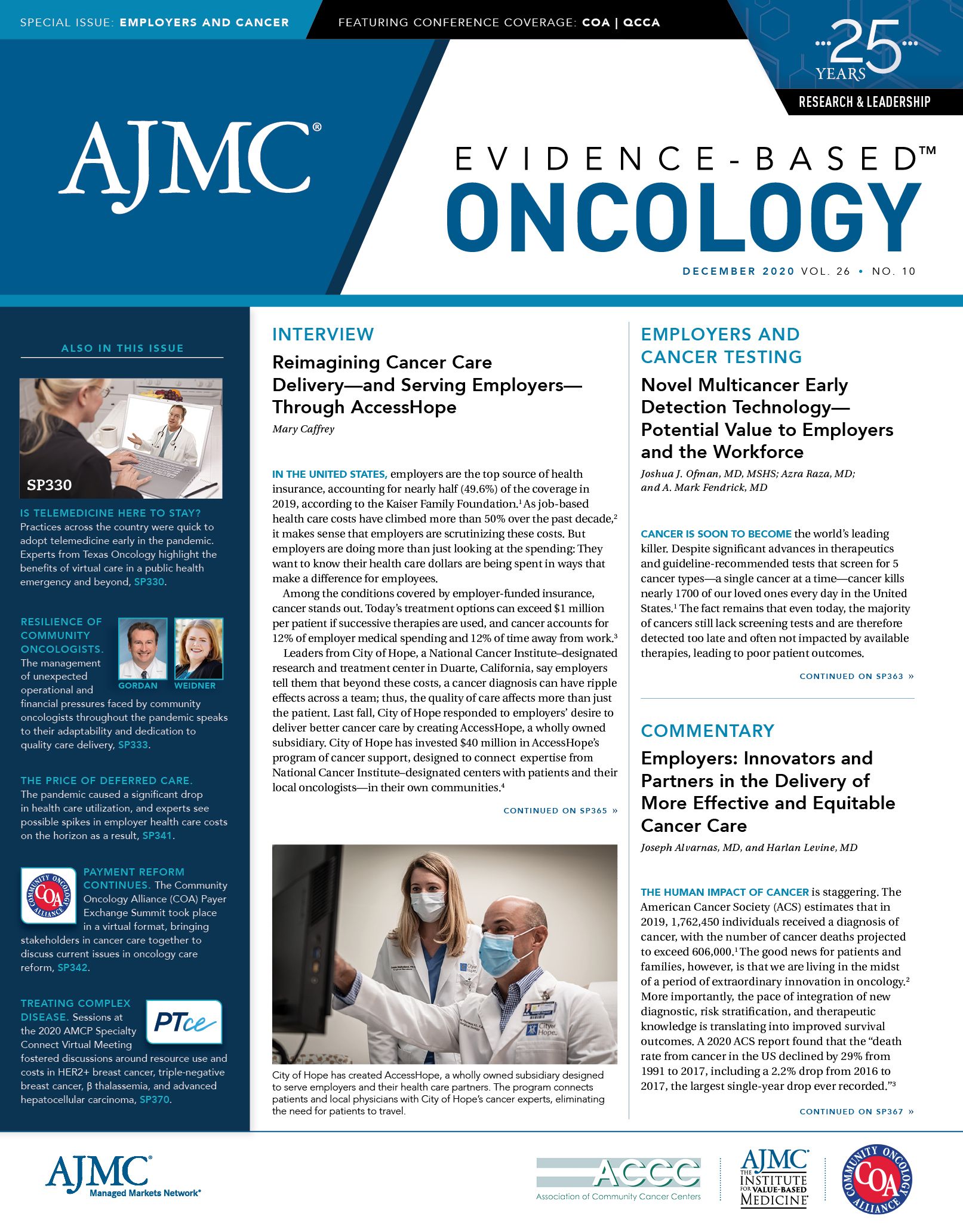Publication
Article
Evidence-Based Oncology
10-Year BRCA Testing Decreases, Study Shows
Author(s):
Among older women with and without breast and ovarian cancers, testing for the BRCA gene dropped precipitously between 2008 and 2018.
Among older women with and without breast cancer and ovarian cancer, testing for the BRCA gene dropped precipitously between 2008 and 2018, according to a study published in JAMA Network Open.
Results from testing for BRCA1/2 pathogenic variants help to inform the treatment and prevention of related cancers, with positive findings indicating higher risk, but changing testing criteria likely mean fewer women know these results. The present study investigated the impact of these changes.
A chief finding was the greater likelihood of a BRCA-positive result among women who were non-Hispanic Black (adjusted odds ratio [aOR], 1.52; 95% CI, 1.04-2.22), living in the West (aOR, 2.67; 95% CI, 1.63-4.49) or South (aOR, 1.80; 95% CI, 1.14-2.86) regions of the United States, and living in areas with few college graduates (aOR, 1.54; 95% CI, 1.10-2.17), as well as those without a personal history of breast or ovarian cancer (aOR, 1.30; 95% CI, 1.12-1.50).
“The current study evaluates how the rate of documented positive results for BRCA testing changed over time and also evaluates the association between clinical and demographic characteristics and positive test results among US women 65 years of age or older,” the authors noted.
The study population of 5533 women, with a mean age of 68.1 (95% CI, 67.9-68.4) years, were culled from Optum’s Claims-Clinical data set. All received BRCA test results between January 1, 2008, and March 31, 2018. The primary outcome was percentage change in positive BRCA results and how that was affected by race/ethnicity, region of residence, income, educational level, and personal history of breast or ovarian cancer.
Analyses found:
- An overall 35.5% decrease in positive BRCA results: from 85.7% (36/42) in 2008 to 55.6 (140/252) in 2018, for an annual percentage change (APC) of –2.55 (95% CI, –3.45 to –1.64)
- A 26.1% decrease in positive BRCA results for women with breast or ovarian cancer: from 83.3% (20/24) in 2008 to 61.6% (61/99) in 2018, for an APC of –3.17
- A 45.0% decrease in positive BRCA results for women without breast or ovarian cancer: from 87.5% (21/24) in 2008 to 48.4% (74/153) in 2018, for an APC of –2.49
Drops in positive findings were also soon over the 10-year period in the Midwest and Northeast regions, while in the West they increased.
During the study period, most of the women tested were non-Hispanic White (84.6%, n = 4679) and from the Midwest (34.6%; n = 1915). The Optum database their data came from represents more than 91 million lives across all states, and race/ethnicity were self-reported.
“The significantly decreasing rate of positive BRCA test results is evident among women 65 years of age or older, which may be partly explained by loosening of testing criteria during the evaluated time range,” they concluded. “However, socioeconomic and regional disparities were identified and persisted in testing use.”
Future studies should investigate their findings compared with those of women younger than 65, the authors recommended.
Reference
Fangjian G, School M, Fuchs EL, Wong R, Yong-Fang K, Berenson AB. Trends in positive BRCA test results among older women in the United States, 2008-2018. JAMA Netw Open. Published online November 5, 2020. doi:10.1001/jamanetworkopen.2020.24358






